ESPN's panel of recruiting experts ranked all 65 Power 5 head coaching jobs by the difficulty of recruiting at each school. Below is a look at the Big 12 rankings. For the complete 1-65 list, and more on the criteria and tiebreaking procedures for the rankings, click HERE.

1. Texas Longhorns: 24 out of 25
Favorable geography/local recruiting territory:: 5 -- It doesn’t get any bigger or better than Texas, and the Longhorns are in the heart of the best recruiting hotbed in the entire country. It also doesn’t hurt that the football culture in the state has many young kids dreaming of being Longhorns when they grow up.
Recruiting/football budget: 5 -- What the football team wants, the football team gets. The Longhorns have one of the largest athletic budgets in the entire country and while they don’t have the largest recruiting budget in the Big 12, there is nothing the coaches are left wanting for.
Facilities to attract recruits: 5 -- Darrell K Royal-Texas Memorial Stadium is one of the grandest palaces in college football and that alone would be enough to put Texas in the top portion of the Big 12. But the recently upgraded football locker room is a work of art and one of the best around and the academic support facility is also top-notch. Again, there’s nothing Texas doesn’t want for from a facility standpoint.
Next-level considerations: 5 -- Few programs can match sending players on to the next level like Texas. While the numbers have dipped a little bit in the last five years, it still doesn’t damper the type of NFL tradition the Longhorns have. You do well at Texas, you’re going to be on the NFL radar, period.
Other intangibles: 4 -- From the Eyes of Texas to the high academic standards, Texas offers about as complete package as any recruit could ever want. The only knock could be is that fans don’t always support the team when it’s not winning big. There have been a large number of empty seats in Memorial Stadium the past few years, but when the Longhorns are winning, the fan base is unmatched by anybody in the country.

2. Oklahoma Sooners: 22 out of 25
Favorable geography/local recruiting territory: 4 -- While the state of Oklahoma itself doesn’t produce a lot of high-profile recruits, over the last five classes it has averaged four ESPN 300 recruits. There have also been plenty of elite players to come out of Oklahoma in the last decade, players like Sam Bradford and Gerald McCoy. But what really pushes OU to a higher level is its proximity to the Dallas-Fort Worth Metroplex. The Metroplex produces so many elite players and Norman is just as close to the talent pool as the University of Texas is. Plus, Oklahoma can easily go into the Kansas junior-college ranks and other top talent-producing states like Louisiana with ease.
Recruiting/football budget: 5 -- Oklahoma spends more on recruiting than anybody else in the Big 12, which helps them target kids locally, but it also allows OU to carry out its national recruiting focus. OU spends just as much time recruiting in other parts of the country and the Sooner administration gives them the backing to support that approach.
Facilities to attract recruits: 5 -- The Sooners are currently going through another facility upgrade, this time a $160 million improvement, that will keep OU ahead of the pack in the Big 12 and throughout the nation. Along with the newly upgraded stadium, the Sooners operate out of state-of-the-art facilities in virtually every aspect of the program.
Next-level considerations: 4 -- Few programs in the Big 12, let alone the country, have produced NFL talent like the Sooners. Oklahoma has supplied 363 players all time in the NFL draft, the fourth-highest total of all schools, including No. 1 picks Sam Bradford, Billy Sims and Lee Roy Selmon. In the Bob Stoops era, the Sooners have had 12 first-round picks, though they’ve only had one first-round pick (Lane Johnson) since 2010.
Other intangibles: 4 -- The Sooners aren’t going anywhere anytime soon, and that support for winning football gives them unique recruiting advantages few in the Big 12 can match. A quality academic support system and a wide-range of academic programs help give them more firepower with recruits.

3. Oklahoma State Cowboys: 19 out of 25
Favorable geography/local recruiting territory: 4 -- Much like OU, Oklahoma State does have a nice home-base to work with on the recruiting front. And yes, OUS is a little bit farther away from the top-flight Texas talent than in-state rival Oklahoma, but the Cowboys still easily have access to the top talent all over Texas. The Cowboys are even closer to the Kansas juco talent pool and have made recruiting that area extremely important in the Mike Gundy era.
Recruiting/football budget: 3 -- The Cowboys have the smallest recruiting budget in the Big 12, but still there’s little doubt from the administration that there is a commitment to football at the school. OSU also doesn’t need a huge budget because the focus is mainly on Oklahoma, Texas and juco-recruits, and not a lot of money is needed for travel.
Facilities to attract recruits: 5 -- Anything the Cowboys want with facilities they get, thanks to mega-booster T. Boone Pickens. For a while this was the only Big 12 program without an indoor complex, but that’s a thing of the past thanks to a recently completed 92,000-square foot facility. Plus Boone Pickens Stadium and the other football facilities are all first-rate and attractive to recruits.
Next-level considerations: 4 -- Oklahoma State doesn’t quite have the same long-term NFL tradition as in-state rival Oklahoma, but the Cowboys have been very successful under Mike Gundy in sending players on to the next level. That’s especially true with high-profile names like Russell Okung, Perrish Cox, Dez Bryant and many others. The Cowboys have proven they have what it takes to send kids to the next level.
Other intangibles: 3 -- Fan support in Stillwater is at an all-time high and the entire community has embraced football as the school’s must-win sport. For the longest time, it was basketball that held the OSU’s fans main interest, but that’s changed in the last decade.
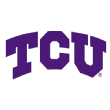
4. TCU Horned Frogs: 19 out of 25
Favorable geography/local recruiting territory: 5 -- TCU is at the heart of the deepest talent pools in the country and with nearly 150 top Division I players within 60 miles of the Horned Frogs’ campus every year, Gary Patterson’s staff doesn’t have to venture too far from home. But even when they do, they have roots all over the Lone Star State and even into Oklahoma.
Recruiting/football budget: 3 -- The Horned Frogs don’t have the biggest recruiting budget, because, well they don’t need it. The local recruiting base means TCU doesn’t have to spend a lot of money on travel for coaches and flying recruits in. But there’s little doubt the athletic department is supportive of the program, as evidenced by salaries of assistant coaches and money spent on promoting the program throughout the Lone Star State.
Facilities to attract recruits: 4 -- Patterson himself spearheaded a majorly needed upgrade in Amon G. Carter Stadium, and it reopened in 2012 after a $164 million renovation that increased seating and put it in the upper quarter of the Big 12 stadiums. TCU has had a very solid indoor complex since 2007 and the athletic complex and academic support facility is one of the best and newest in the conference.
Next-level considerations: 3 -- Before Patterson arrived, TCU would have never been a place to go if you dreamed of playing in the NFL. But he has quickly changed that and now NFL scouts certainly pay attention to Horned Frog talent, especially after the success of Andy Dalton, Jerry Hughes and Jason Verrett.
Other intangibles: 4 -- A private education at a good academic institution is something that’s hard to measure, but it’s certainly a plus when selling to recruits. Another positive intangible is that TCU continues to be a program on the rise nationally and the attention the Horned Frogs have gotten the last two years on the field has helped boost their name nationally.
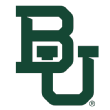
5. Baylor Bears: 18 out of 25
Favorable geography/local recruiting territory: 4 -- No state produces more Division I recruits annually than Texas, but the smaller-town setting in Waco might not be for everybody, especially for some prospects who are coming from Houston and the Metroplex.
Recruiting/football budget: 3 -- With Baylor being a private school, there aren’t concrete numbers on the program’s football and recruiting budgets. However, the Bears have invested heavily in Art Briles, recently opened a $266 million stadium and rank in the middle of the conference for its total athletic budget. Still the investment has increased greatly since Briles arrived, pushing it from the bottom of college football to the middle of the Big 12.
Facilities to attract recruits: 5 -- After suffering for years in an obsolete Floyd Casey Stadium, the Bears now play in a new, state-of-the-art McLane Stadium. Baylor also has a brand-new indoor football complex that rivals any of the best in the Big 12 and a quality weight room that measures up with others in the league.
Next-level considerations: 3 -- Before Briles arrived, recruits didn’t identify Baylor as a destination that would help you get to the NFL. But that’s changed dramatically as Briles recruits Robert Griffin III, Kendall Weigh and Terrance Williams went on to become high-round draft picks. RGIII winning the Heisman also helped put Baylor on the map like nothing else could. What’s keeping Baylor from a higher ranking is that it is still known mainly for offensive players, not defensive firepower.
Other intangibles: 3 -- The Bears have tremendous chemistry as a staff recruiting on the trail, including coaches that have recruited the Lone Star State for decades like Phil Bennett and Jim Gush and fast-rising recruiters Chris Achuff, Kendal Briles and Jeff Lebby. Briles has also surrounded himself with some up-and-coming operations folks like Beau Trahan, Dominque Zeigler, Joe Jon Finely and Brodney Pool. The Bears still have to overcome being known as an offensive-only school and not having the tradition and fan support that Texas and Texas A&M have on the trail, but Baylor has done a very good job of marketing to recruits the new stadium, multiple uniform combinations and back-to-back Big 12 championships.
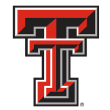
6. Texas Tech Red Raiders: 18 out of 25
Favorable geography/local recruiting territory: 4 -- Even though Texas Tech is away from the major metro areas in the Lone Star State, it is still in Texas and an in-state program always will have an edge over out-of-state raiders when it comes to the top talent in the Lone Star State. The small-town setting might turn some off, but there’s still plenty of big-time players in Texas that like what Texas Tech is all about.
Recruiting/football budget: 4 -- The Red Raiders have seen an increase of almost 90 percent in their recruiting budget since 2009, and that’s important. One of the knocks previous coach Mike Leach had on Texas Tech was that the athletic department wouldn’t support his recruiting efforts enough for him to be highly successful. That’s different under this regime, and it’s paying off with more money to bring recruits in and take the Red Raider recruiting brand into other key areas like Louisiana, Oklahoma and the Kansas jucos.
Facilities to attract recruits: 3 -- Jones AT&T Stadium was upgraded prior to the 2013 season and offers one of the best home-field advantages in college football. That alone gives the Red Raiders high marks in this department, but still there are some other areas in the football facilities that rank in the middle of the pack in the Big 12.
Next-level considerations: 3 -- The Red Raiders haven’t been known for producing a high volume of NFL talent over the years, but there have been signs of progress under Kliff Kingsbury.
Other intangibles: 4 -- Texas Tech has been one of Under Armour’s best clients and the Red Raiders’ multiple uniform combinations are something that sells really well on the recruiting trail.

7. Kansas State Wildcats: 16 out of 25
Favorable geography/local recruiting territory: 2 -- Manhattan is a tremendous small college town, but attracting talent from big cities can be awfully tough, especially when the largest metro area is more than 90 miles to the East. Still, K-State does have access to Kansas City and it has deep, deep roots with one of the best junior-college talent pools in the nation. That alone might give it a bigger number here, but what knocks K-State down some is that many top Kansas players are looking to leave, especially in the past few classes, and it has to battle rival KU for what talent is left when the poachers are done.
Recruiting/football budget: 2 -- While other conference programs significantly increased their spending on recruiting from 2009-2013, the Wildcats actually saw a drop of nearly 17 percent. In fact, the Wildcats were the only program in the league to see a decrease. But still, those around the Wildcat program know football is the school’s top athletic priority and while they might not spend enormous amounts of money on wooing recruits, it’s still clear they take football serious in Manhattan.
Facilities to attract recruits: 5 -- Nobody in the Big 12 has been more aggressive at upgrading their football facilities than K-State. The Wildcats have transformed their facilities over the past decade from something that rivaled a mid-major program into one of the best of the best in the country. K-State spent $68 million transforming Bill Snyder Family Stadium and the Vanier Family Football complex to give the Wildcats first-class resources that rival the blue-bloods of college football.
Next-level considerations: 4 -- It might surprise many, but the Wildcats own the Big 12’s longest active streak of having players selected in the NFL draft (22 straight). Bill Snyder has sent 123 players to the NFL as either draft picks or free agents, including longtime veteran cornerback Terence Newman, Eagles running back Darren Sproles, Packer receiver Jordy Neslon and Seahawks receiver Tyler Lockett.
Other intangibles: 3 -- One of the positive selling points for Kansas State is truly its fan base. Sure, every school has fans, but since 1993, K-State has played in seven different bowls in three different states and has averaged nearly 30,000 fans at each of its bowl games. The Wildcats had an estimated 45,000 fans travel to Dallas for the 1997 Cotton Bowl, while the largest crowd ever to cross state lines to watch a college football game went with the Wildcats to Tempe, Ariz., for the Wildcats' 1997 Fiesta Bowl victory over Syracuse.

8. West Virginia Mountaineers: 15 out of 25
Favorable geography/local recruiting territory: 2 -- West Virginia is one of the bottom-feeders when it comes to producing Division I talent nationally, so the Mountaineers have to head elsewhere to find recruits. The good news is that they’re two hours from Pittsburgh, a good spot for talent. But the bad news is that there’s plenty of competition there between Penn State and Pitt, for starters. The lack of a big recruiting base has forced WVU to recruit nationally, especially in parts of the Southeast.
Recruiting/football budget: 3 -- West Virginia is in the middle of the Big 12 pack from a recruiting budget standpoint, but the school has definitely given the Mountaineer coaches what they need from a financial standpoint to go out and win recruiting battles.
Facilities to attract recruits: 3 -- There’s little doubt Mountaineer Field at Milan Puskar Stadium is one of the toughest places to play in the Big 12 and 60,000 fans cram into the stadium every week. There have also been some nice upgrades to the stadium over the past few years, bringing it into the upper level of the conference. However, the rest of the football facility needs improvement and there’s a big push to raise funds to make that happen.
Next-level considerations: 4 -- Historically, West Virginia hadn’t been known as a NFL factory, but a lot has changed in the last four years. In 2012, Bruce Irvin went 15th overall to the Seattle Seahawks. A year later in 2013, the St. Louis Rams chose Tavon Austin with the eighth pick. Then in 2015, the Chicago Bears selected Kevin White with the seventh overall pick in the NFL Draft.
Other intangibles: 3 -- The WVU fan base is one of the most supportive and loyal in the country. Win or lose, they will pack the stands. WVU’s odd geographical outlier status in the conference is a slight drawback on the trail, however.
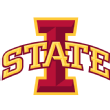
9. Iowa State Cyclones: 13 out of 25
Favorable geography/local recruiting territory: 2 -- In the past five classes, Iowa has only produced four ESPN 300 prospects and six four-star recruits. That might be enough to support one Power 5 program when supplemented with out-of-state recruiting, but the Cyclones have had to battle in-state rival Iowa and all the success Kirk Ferentz has had over the years.
Recruiting/football budget: 3 -- It might surprise a lot people, but Iowa State annually spends more than Texas in recruiting. But keep in mind, the Cyclones have to do that because almost all of their recruiting efforts have to be focused out of state with the small local talent pool. It costs a lot of money to fly coaches all over the country to recruit and bring recruits in to Des Moines and drive them up to Ames for official visits. Still, the money spent shows the Cyclone athletic department is trying to support its football program.
Facilities to attract recruits: 3 -- The Cyclones recently spent $20.6 million upgrading the Bergstrom Football Complex that hosts the program’s indoor facility, weight room, meeting rooms, coaching offices, lockers and all the bells and whistles everybody else in the conference has. It was a major step forward for Iowa State, adding 60,000 additional square feet to the existing facility. Iowa State also just recently spent $60 million upgrading Jack Trice Stadium and now the Cyclones boast the third-largest stadium in the Big 12 with a capacity of 61,000.
Next-level considerations: 2 -- Iowa State hasn’t been known as a NFL football factory, especially at the skill positions, but the Cyclones have sent a handful of linemen, tight ends and linebackers to the next level recently. Still the program doesn’t have a former big-name player starring in the league at this point.
Other intangibles: 3 -- Iowa State has one of the most loyal fan bases around, period. They will show up and support a losing program, but they also expect and demand a winning team. They also travel really well on the road.
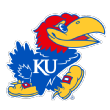
Kansas Jayhawks: 12 out of 25
Favorable geography/local recruiting territory: 3 -- Kansas isn’t the recruiting hot bed that Texas is, but still produces more talent annually than Iowa does. Plus, the Jayhawks also have very good access to a major metro area in Kansas City and are close to a deep junior-college talent pool. Still, Kansas kids have shown they’re not afraid to leave the state, as we’ve seen with many of the blue-chip talent in the last five years. It also doesn’t help that KU has to battle rival K-State for what talent is left after the top programs have picked over it.
Recruiting/football budget: 3 -- Kansas continues to pump more and more money into its football department and recruiting budget. The Jayhawks have seen an increase of almost 70 percent since 2009, and that puts them in the middle-of-the pack in the league. It’s support like that from a financial standpoint that shows the administration is firmly behind trying to make football work in Lawrence.
Facilities to attract recruits: 2 -- When Mark Mangino was around in Lawrence, he insisted on finally getting KU its own football-only complex. That arrived in 2008 with the construction of the Anderson Family Football Complex at Kivisto Field. The $33-million, 80,000-square feet project included weight rooms, locker rooms, administrative offices, academic support and two practice fields. It’s a type of commitment the school had never made to the program before. While it’s fine, it’s already seven years old. KU’s stadium is much, much older, though. Memorial Stadium is going on its 94th season of football and has certainly seen much better days. Despite a number of cosmetic updates in the last decade, a complete overhaul is needed but has only been talked about for years.
Next-level considerations: 2 -- Despite more downs than ups on the field, KU has sent a number of players on to the NFL recently, including well-known names like Aqib Talib, Darrell Stuckey and Bradley McDouglad. But still KU is not really known as a place you go if you want to put your name on the NFL radar.
Other intangibles: 2 -- Kansas is always going to be known as a basketball first school, and that’s a stigma coaches have been fighting for decades on the recruiting trail, long before David Beaty arrived in Lawrence. Still, the Jayhawks have a young, aggressive and very hard-working group of coaches that should help them lure talent to KU. If they can show signs of life on the field next season, then KU could start to climb the charts with recruits.
